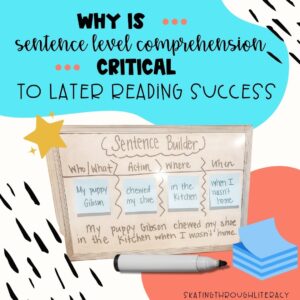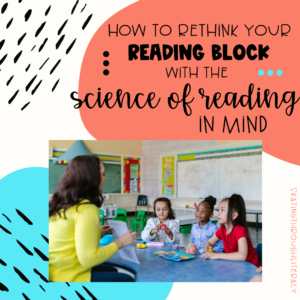So you know a word work routine is an important part of your literacy block. But knowing it’s important doesn’t necessarily give you the ins and outs of how to get started in your classroom. In my first few years of teaching I would open up my curriculum guide and feel LOST. Sure there was a page that told me which pattern to introduce to the kids. But that’s it. I knew simply showing kids a word and saying, “hey here look at this pattern” wasn’t going to be enough.
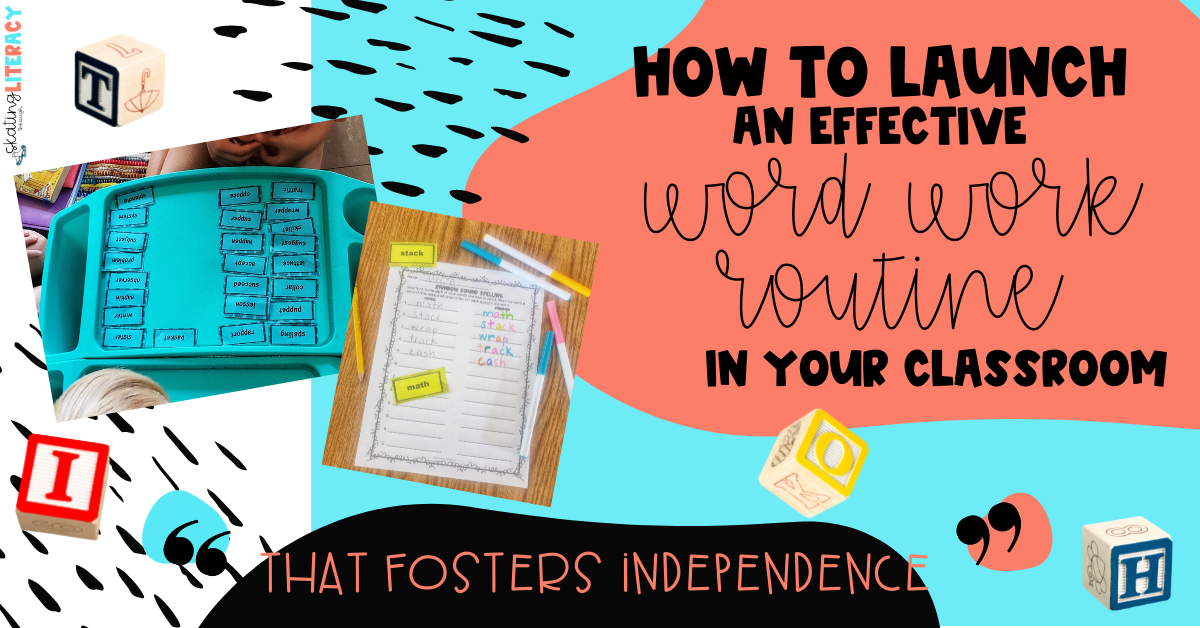
I’ve spent the past 2 years perfecting my own work work routines, taking bits and pieces of science based research to explicitly teach my students what they need to know about words, regardless of what pattern your curriculum says you need to teach. And now I want to share that routine with you so you can get started with an effective word work routine in your classroom.
Word work is just a small part of the overall picture when it comes to your phonics instruction. Want to know more? I’ve created the 7 Ways to Revamp your Phonics Instruction (starting tomorrow) Workbook just for you, for FREE! Be sure to download a copy of yours today to get started on your own phonics journey.
Word Work
What is word work? I began my teaching career hook, line, and sinker with the daily 5. If you are not familiar with the daily 5, I highly suggest you grab yourself a copy and spend some time getting to know the structure. While I personally believe much needs to be added to the daily 5 for my kids in order to see results and adhere to the standards, the daily 5 remains the backbone of what my students do during independent work time.
Within the daily 5 is a component where students work on words independently.
Launching Word Work Whole Group
We all know simply sending students to independent work without explicit instruction will lead to disastrous results. Students are not ready to work independently before they have a solid understanding of the words they are studying and why it is important. Launching an effective word work routine begins with how you introduce each new pattern to your students.
Self Discovery of Word Patterns
We know that students learn best when they are engaged in the work and discovering information on their own, rather than being spoon fed the facts. It has long been studied the benefits self discovery can have for our learners. I love this article that jumps into 5 ways to promote self discovery in your classroom. But I’m here today to discuss discovering words specifically.
At the beginning of a new unit, all my students participate in a blind sort. This is an essential part of our word work routine. Students work in partners with a bag of words in which they have never seen before and do not know the pattern. This is where the term blind comes from; they do not know the answers. Students then work with their pairs to find patterns in words and to create similar groups.
If your students have never been challenged with this type of word work study before, the first few sorts can be challenging. However, the insight that students develop over time to look deeply at how words are constructed becomes magical. This self discovery phase is all that happens on the first day of instruction.
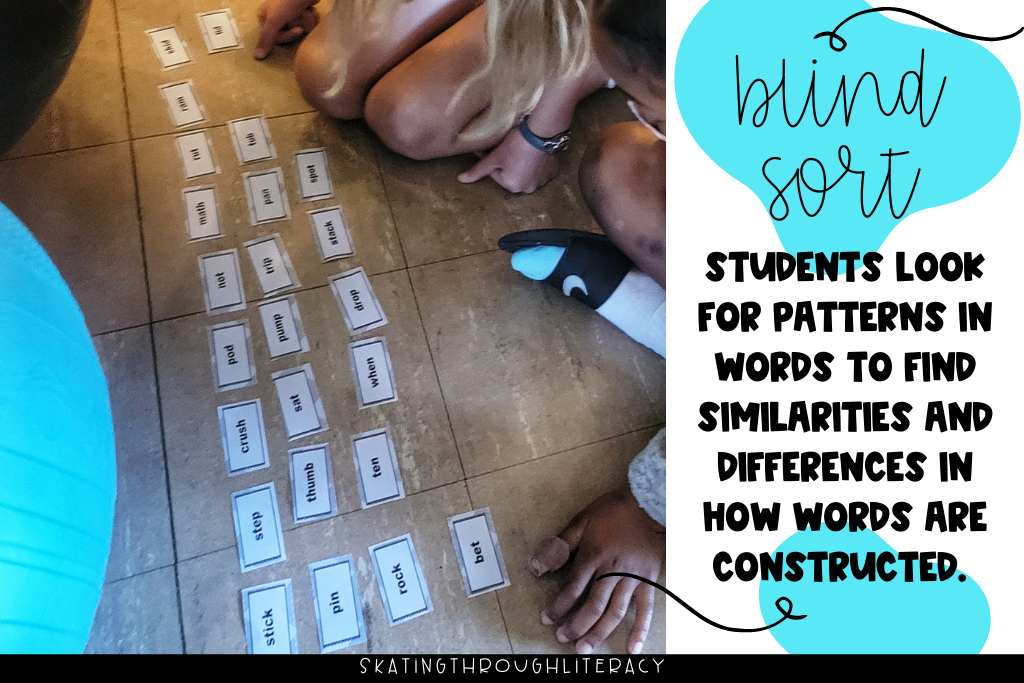
Word Work Activities
The following day, students receive the same bag of words with the same partner. This time, however, we call it a speed sort. I explain this to students as they now know the answers because they have seen it before. Their goal is to sort their words quickly into the correct pattern. Once the word sort is completed, we also record the columns into our word work notebook for further study. We create the correct amount of groups and label each heading with the phonics pattern we notice in the words. The creation of this chart happens as a whole class as they are completing their sort. This structure provides a context in which the phonics pattern can be explicitly taught, practiced, and reviewed to clear up and solidify any misconceptions. We continue to refer and add onto this chart throughout our week study.
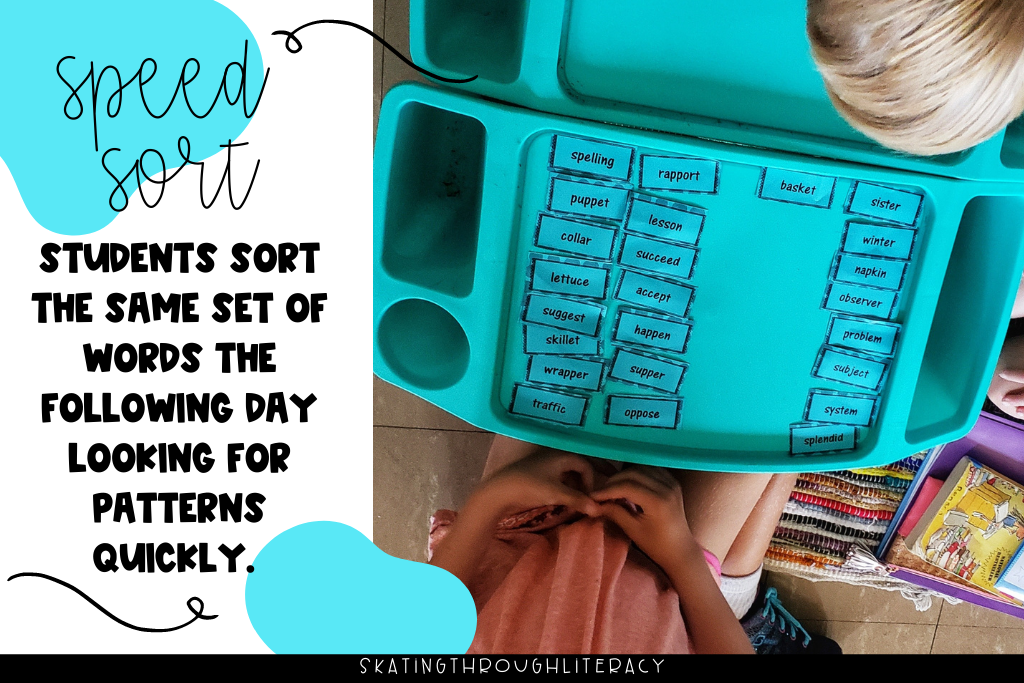
Word Work ideas for Daily 5
Once students have experienced this type of exposure, they are now ready to work independently on the word work. It is crucial that students practice meaningful independent work that promotes their understanding of how words work, rather than a simple memorization technique. The best type of activities for this are ones that promote the sounds in words. Here is a list of some of my favorite independent activities:
- Sound Rainbow Write
- Syllable Sort
- Sound Sort
- Word Hunts
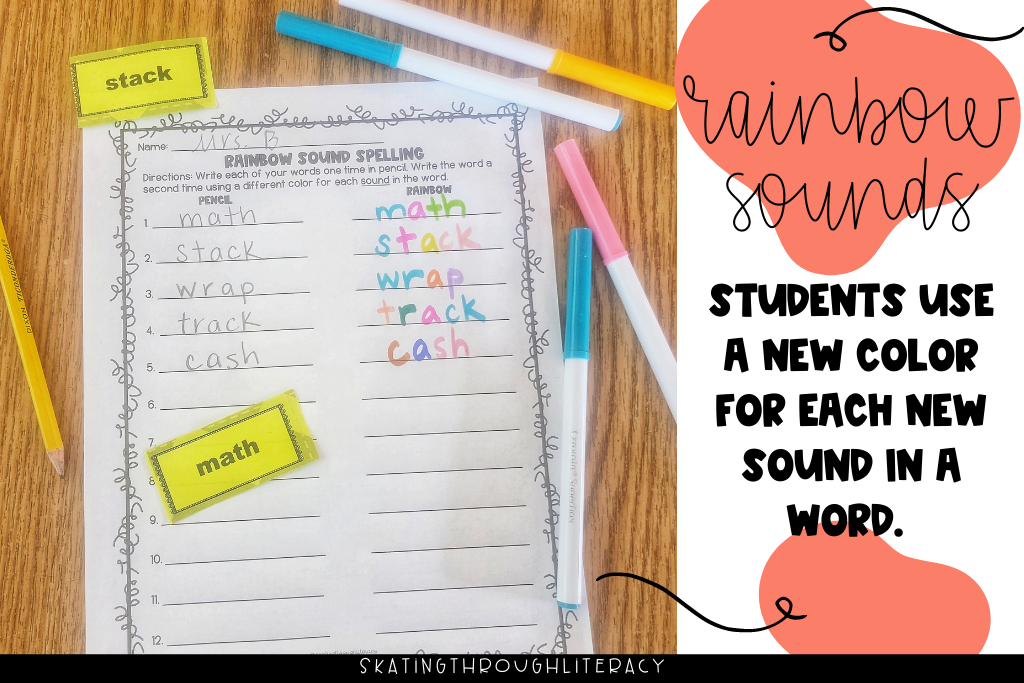
Introducing the activities you want to implement is best when done one at a time. Each week you can add on another way to practice your words. Once all your activities have been explicitly taught, students can then have some choice about which word work activities they choose to work on. Organizing these choices for students in an easy to locate spot in the classroom that does not change from week to week is key to helping your students develop independence. You should choose ideas for word work that can be used week to week. This will allow the students to focus on the structure of each word, rather than the activity being asked of them.
Building Stamina
Independent students is key to allowing you the time needed to meet with reading groups or conduct reading conferences. Building this independence however, takes time. The biggest mistake I see teachers make (or have made myself) is rushing this process. It is critical you give students as much time as they need to develop the stamina needed to work independently. A component of the daily 5 is tracking stamina. Once students have been introduced to reading and writing stamina it is time to introduce word work. This order allow them to be familiar with the process. The best part is students become invested in seeing that stamina chart grow. This creates an even buy in to your literacy block. This does not need to be fancy or complicated. Simply create a bar chart and watch your student’s stamina grow. Each time they show cracks in that stamina, pause, chart the growth, and reflect. Aim to do better each time and before long your students will amaze you with what they can do.

Digital Word Work
Along with so many other things, word work instruction took a huge hit during the pandemic when students were out of school. My students were not getting the practice with words that they so desperately needed. I began working to create rigorous word work routines that can be completed through technology. Even now that I am back in the classroom, digital word work will always be an option for my students to work on independently during their practice time. I have tons of patterns completed for you and within each resource there are anywhere from 6-10 meaningful activities for your students to practice the word pattern you are studying. Check out all these resources for more information.

What Phonics List do I teach from?
One of the most commonly asked questions I get on instagram is where do you get your words from. The answer is you can really that you can use whatever you have available. So many of us teachers are told what curriculum we have to teach that comes with a laid out list of which phonics lists to teach and when. I am one of these teachers in that position. However, these big boxed curriculums rarely hit my student needs. So I start with the list given to me and supplement from all over the place as I feel necessary.
I usually keep most my students on the same pattern type and differentiate based on difficulty. A program such Words their Way may advocate for each kid to be on their own list; however in my reality of teaching 87 3rd graders reading all by myself, that is not a manageable goal or good use of my whole group tier one instruction. Instead, I teach the pattern whole group, and increase or decrease the difficulty as needed. For example, if we’re studying vowel digraphs, I might have 4 different levels of vowel digraphs happening amongst the students. My readers who struggle may be working on see, tree, read, and tea while my readers who are excelling beyond grade level may be working on sneaker, beneath, impeach, and disagree.
Beyond Vowel & Consonant Patterns
These word work routines don’t just work for consonant and vowel sounds. They also work for teaching any syllable type, prefixes, suffixes, compound words, contractions, homophones, and more. Depending on your grade level will depend on where you should focus a bulk of your phonics instruction. For example, in 3rd grade, syllable types become very important to explicitly teach. These same word work routines described in this post can also be utilized for exactly this. You can read more about why teaching syllable types is important in my blog post here.
Mastering this word work routine at the beginning of the year will lead to great success down the road for your literacy block. Students become accustomed to discovering and studying the pattern before working independently on their words. Using these strategies allows you to focus your instruction and gives you a solid foundation for this crucial component of your literacy block.


